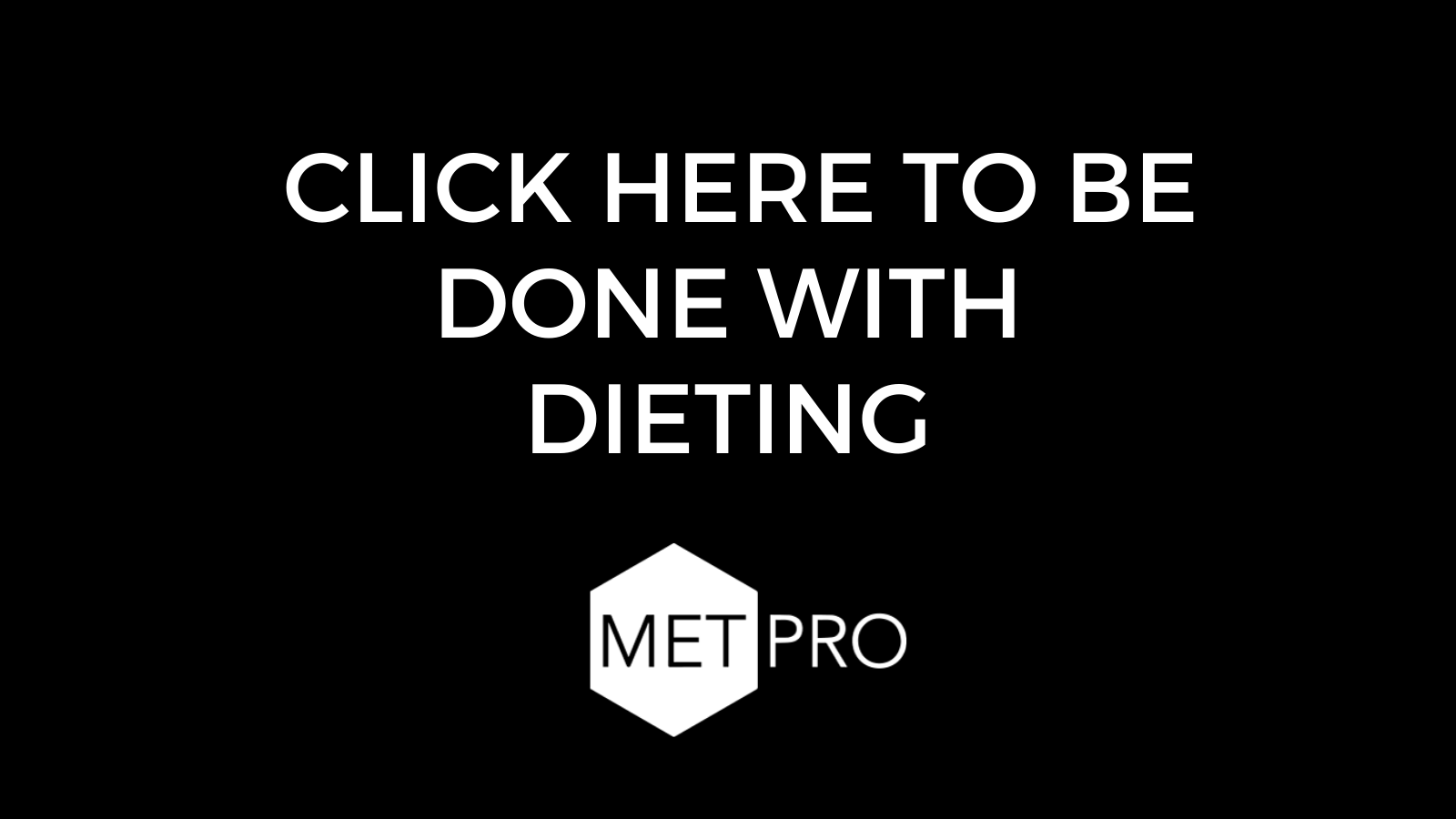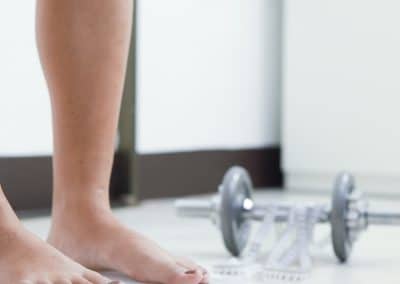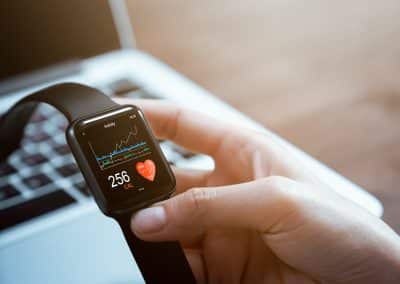I am joined by MetPro Founder Angelo Poli. We are discussing weight loss and menopause. This is a follow-up to our interview with Stacy Sims that we had because she brought up many things. Now I have a billion questions for you.
I thoroughly enjoyed learning from what Stacy brought to the table. Those are such great points.
I have a major girl crush on her. She’s fantastic. I follow all of her things. If you haven’t read the episode with Stacy Sims, readers out there, I highly recommend you do that for the background of what Angelo and I are going to dive into. One of the questions I have for you, Angelo, is that Stacy talks a lot about how you need to increase the amount of protein that you are eating as a woman who’s either going through perimenopause or menopause. As MetPro coaches, we have options where we can increase some protein. We can keep it the same. We decreased and increased carbs. How do we make that work specifically for our clients, and how do we know when the best time to do that is?
On the protein needs. This isn’t across the board if you want to retain your youthfulness. That’s whether you are a male or female, you want to maintain your muscle mass. That is related to protein. The protocol of the foundation being sports, nutrition, that’s going to be a baseline that’s built-in across the board no matter where you are coming from.
What we learn as we dive into more of the science behind what happens in perimenopause and menopause is all the ingredients that we start missing at that stage in our life for a woman, all of the biological changes that start taking place, unfortunately, are an assault on woman’s lean mass, how her body composition is, and as we age, particularly, explosive strength.
What happens is that it doesn’t become more important than it is for anyone else. It’s that the bottom falls out for women who are going into perimenopause and menopause, so it makes it even more important that we have that dialed in and that we are not missing anything in that department. How much protein should you get? What’s my answer?
It depends.
It’s a good assumption that for the average person coming to us, for the average female in that circumstance, if you are not already in the fitness lifestyle, typically that means more, or at least spread it out a little bit more optimal. It’s all going to depend on who you are, where you are going, what you are trying to accomplish, what your priorities are, and then we are going to determine, “Here’s where we are going to start with a protein. Here’s the best way to get it to you. Here’s how we are going to make it simple, easy, and effective on a daily basis.”
Selfishly, I try to figure out how that relates to me specifically because I’m trying to increase the amount of my running and my speed. I want to be strong but I don’t want to be too bulky because as soon as I start doing weights, I get bigger. Help.
How do I reverse all of that? The answer is the technical weird term called periodization. What we think about that is in training cycles. What is our goal during this training cycle? One of the things that I loved that Stacy Sims talked about was the importance of a certain type of training. Basically, what she enumerated was high-intensity training for women, including that high intensity, not just high intensity, like, “Put more effort into it.” What she described was that either submaximal anaerobic endurance or even more all outburst going to push, and that could be sprint training, our sports or can be anything that is going to overload.
The central nervous system forces the body to adapt in ways that recover what’s often lost for women. That can be done via classic strength sports. We can get into the gym. We can do some heavy weight training, and often, including some of that, is only going to help with youthfulness and longevity. That is not the only way to do it. Another way to do it, for example, someone who’s allocating time for their endurance sports. Let’s say you are a runner but need to include some of this higher-intensity explosive work while we can do sprint training.
We can do a host of different biometric activities and include some strength training that’s not going to make you bulky. In general, that’s not something you should be worried about. Your coach will call it out if there’s an issue in this department but that’s not something that most females are going to participate in at a level that’s going to be a problem. That’s people saying, “I want to go in this career but I don’t want to make too much money.”
I had clients that would come in years ago in my office. I’m not one of those guys that would have pictures of bodybuilders on the wall or anything like that. I did have an old-school, the black-and-white pick of Arnold. Every time he almost put it on the calendar, as soon as the person would meet and then walk out, I would meet with a guy, and we would talk about his physique training and what we were going to do. He would see it on the back of the door. He would go, “I don’t want to get that bulk.”
I said, “I’m glad you told me because as you not mentioned anything, we were going to blow way past Arnold, and you were going to be that big next week. Trust me. You were at no risk of those issues taking place. We will catch it long before it gets there.” Let’s talk about first the practical side, and then I want to come back to the actual steps for you because we are right in the middle of it.
Practical side, and forgive me if I get the quote wrong but somewhere in the ballpark of Stacy said the benefits of doing 3 to 6 six rep training, that’s that strength rep range, whereas absolutely going to force you to overload. In my experience, someone who is untrained, who tries to do 3 to 6 reps, is either simply stopping before they are done because they are using a weight that’s far too light. In practical terms, what I find is that we have to train and exercise to get in good enough shape to participate in the training and exercise that will transform our physiques and our body.
That is a classic example of why routine is so important, why there should be at least some level of resistance training in your routine, and the benefits that it can have. It’s also why there seems to be a little bit of perception discrepancy between how men and women get in shape at different paces. It’s like, “Men get in shape. They can lose weight fast, this, that or the other.” That can be true. We can go into a host of hormonal reasons, etc., as muscle mass but there’s a practical explanation that outpaces any of those other contributing factors.
What’s that?
When I talk with a guy who says, “I want to get back into exercise.” We then go back and recount their history. It’s quite often they spent in high school, college or at some point in their life, a few years training in the weight room and have experienced. They’ve built up that muscle memory. They’ve had a point in their life where they’ve done heavy load training. They’ve learned the techniques for the training. They’ve learned how to do those things before their body has experienced them. Maybe there has been a decade hiatus.
You’ve got some muscle memory going on.
There’s definitely, we get a large segment of the population that’s like, “Have you ever lifted weights?” They are like, “I’ve done a few group classes when I was younger, but now, I’m 49 years old. The weight room is all the guys, machines, and grunting. I’ve never done that before.” In probably week one, we are not going to be going in and loading up a bar with plates and doing Sumo deadlifts. What this woman has to do is she needs to get to that explosive training, strength training, and conditioning. It will happen faster than she thinks but she’s going to have to invest an extra amount of time into getting her body conditioned to handle training with intensity.
Whereas that guy has that experience, it might be literally a few weeks to get ready for that intense training or for some women that don’t have a history in it could be a few months. That’s what I try and prepare people for. It’s like, “Why are you having me do this strength training routine now? Is this going to help me lose weight tomorrow?” “It’s not. What it’s going to do is lay the foundation for the training that three months from now is going to change your life but we have to start somewhere.” That’s what we are working for so that way we can have that intensity. Did I tell you the story about what people would say when they used to walk into the gym years ago and look at the transformations on the wall?
They would always glance at them and say, “I want to look like that. What did they do to get that transformation?” I had the before and afters on the wall at the old gym. I go, “What did they look like to you?” “They look like an athlete.” “Do you want to look like an athlete? We are going to train and become an athlete.” I know a lot of people are like, “That’s not me. I have never been an athlete. I’m not interested in being an athlete. I just want to get healthy and lose a few pounds. “ Throw that out.
Mentally that is holding you back. You are an athlete. You need to be an athlete for the sport that you are participating in in your life. That means maintaining that youthful vigor. That’s going to be found on the other side of some intensity in your training. Do you want to be able to lose the pounds, get healthy, improve your cardiac health, get better blood work and simply have the energy to play with your grandkids? We are going to turn you into an athlete for that.
Here are the steps that we take. It’s just a matter of degree, finding the right entry-level. That dovetails back into everything we are always talking about. That is lifestyle, consistency, and routine. Here are the tools to do that, the best place to start, and how we get there. It is incredible how women, even dealing with perimenopause and in the middle of menopause, can still have a lot of control over the hormonal changes that are taking place in their bodies when it comes to their body composition.
That is new information to me. After talking to Dr. Sims, hearing that you have the ability to fight back naturally with things is fascinating.
For you, what we are doing is we are simply taking advantage of the periods that we want to rev your metabolism to also participate in a performance cycle. That is a great opportunity. If you are at home reading and going, “This is great. In the last episode with Stacy, what she said sounds great but if I’m trying to lose weight, don’t I have to cut calories? Don’t I have to decrease some of my carbohydrates? Don’t I have to reduce my intensity? Will that impact my performance?” The bottom line is there is a monochrome of that. When you are cutting, you are not going to have as much fuel for recovery. You cannot cut indefinitely. Your body will require breaks. Therefore, those breaks are ideal times to push the boundaries on performance and dip your finger in.
If you are working with one of our MetPro coaches, you are already doing some resistance training. You are already in it but to push the boundaries on it a little bit, go into a performance cycle. I used to lecture and would give this lecture in colleges to the Physiology Department and even Nutrition Department, where we would cover evaluation-based coaching based on body composition and performance transformation. It was a mathematical look at, “Here are your options and boiling down the finite amount of changes you can make to your diet or training, how it will impact your body, and mathematically what options that leaves you with for one step, next step.” I would take the students through that.
Here’s what we found. You can do everything right. We can start at the top of that funnel, and you can make all the right changes with exercise, nutrition, diet, schedule, training or lifestyle. Your body will absolutely respond to that. It will begin changing. Somewhere at the end of that chain, you will still reach a plateau where your body goes, “This is how far I have come. I have adapted to these changes. If nothing else changes, it’s basically where you are going to stay.” If you want to change further, something has to be readjusted.
“Now, we’ve pulled every single lever. What’s left?” I would always ask the students this, and it would stiny them. They could never come up with the answer, “You have to go all the way back to the beginning and now reset your goal for a time, not indefinitely.” What goal do you think is most common when somebody calls up one of our MetPro coaches?
Weight loss.
Do you want to lose weight or do you want to focus on performance? We get more weight loss. We’ve gone through the whole process, and we are down however many pounds. We’ve made great progress but it’s like, “I want 10 more pounds. I want that next level of that physique and athleticism.” Now we are going to go back and go through the whole process again but we are changing the parameters.
We are not trying to lose more weight. We are trying to transform your performance. We are trying to make you stronger and leaner, improve your body composition, and maintain your body weight but focus on a true performance cycle. When you go through that, then you get more than just the metabolic adaption. If we take someone through a brief up adjust cycle or metabolic revving cycle, in a few weeks, they can offset. Most people can offset the effects of dieting on their metabolism.
2 or 3 weeks are not enough time to create physiological adaptions, hit new PRs, improve strength, increase loads, and do that high load training or explosive training and take your performance to another level. That takes a little longer. It doesn’t take years. It could take a few months. Go through a performance cycle. Your body, on a hormonal level and a neuromuscular level, will transform.
It’s going to be the most adjust or revving cycle you’ve ever done if you are increasing your intake and step with that, then you can go back through the funnel and go through a very strategic process. Next time you push for weight loss, it’s going to be that much easier because you have turned into that athletic machine or you’ve taken several steps towards it. For you, Crystal, we are at the tail end of a performance cycle.
We are moving into more of, “We are cutting intake down.” We are doing more of calorie-burning aerobic activity and going to ride this down. In about 2 or 3 months, we are going to have a cycle where I’m going to have you increase the resistance on your tonal. We are going to have you use the weights. We are going to include more speed or hit training in your running schedule. We are going to focus on getting all those adaptive responses that are going to transform your body composition and the side effect. It is a faster metabolism because then the cutting cycle that’s coming right after that, what happens after we do a revving cycle and performance cycle?
You lose weight and fat.
It’s much more effective. That’s why we can take all of these key recommendations that Stacy Sims was saying in her interview about the importance of having that intensity in your training and not being afraid of doing some heavy weights or explosive training. That can be worked seamlessly into a revving cycle, even if, and here’s the point I wanted to get across, you are thinking, “I just want to lose weight.” This will help with that. It will contribute towards that but this is going to help the long game.
This is going to help you lose weight and keep it off through your late 40s or 50s. It’s going to help keep you youthful and vigorous through your 60s or even 70s. I have had clients in their 80s that are still youthful. They always have a routine to keep their physical strength intact. Usually, they’ve had it in place for some years. I’m a huge fan of resistance training, as anyone who’s ever read this, and it has many benefits when it comes to vitality and longevity.
I’m a huge fan of it, and I’m glad that I have been able to integrate it. I love whenever clients are excited to try it and then get better at it and more comfortable with it. It’s very exciting. Was there anything else when you were listening to Dr. Sims that you felt like, “I need to make sure that I explain this piece of it from MetPro perspective?”
I need some help losing weight or getting in shape because it’s harder now that I’m in menopause or pairing menopause. You are not crazy. That’s not in your head. All the physiological reasons that she enumerated here are the things that are stacked against you that make it harder but you are not without options. What most people want to hear is, “If you eat this one food, that’s going to undo all the effects you are dealing with.” Everyone else eats differently. You are going to eat just these special ingredients, and that’s going to undo the effects of menopause.
Is that not with superfoods?
No. She mentioned some supplements and things like that that are helpful and great. What did she say were the main pieces?
Healthy macronutrients and eating clean. It’s the same basic stuff that we say at MePtro is what I was hearing like, “Really clean.”
Not being afraid of that intense training and that fitness lifestyle is huge. To be effective in that, you need clean eating, nutrition, and all those pieces. It’s easy to start missing some of the things that your body needs, especially if you get sidelined by fat or gimmick dieting. There’s some wonky stuff out there that directly undermines your body’s ability to have all the nutrients that it needs to perform. It’s detrimental to anyone but if you fall under this category of, “I’m going into menopause, and I have these hormonal changes, and it seems like I’m holding less muscle. My body wants to accumulate more belly fat.”
Falling into cycles of crash diets and yo-yo dieting amplifies that process. We are taking a little extra time here but this is important for people to know. In our minds, what we can assume sometimes is, “I try to diet. It was this weird wonky extreme thing where I was doing this weird food, and it was in 21 days. I lost 10 pounds.” You gained it right back because, of course, you don’t eat for 21 days. You do something really wonky, and it wasn’t a real thing then, “I will try something else next time.” In our mind, it’s like, “Nothing gained, nothing lost.” That’s not true.
I feel like everybody needs to have an asterisk on that because I did not know that until you started to talk about this. Explain what it is. What’s the downside?
When you lost that 10 pounds from that crash diet, you were not uplifting weights and doing any PR type training because you were exhausted and hardly eating anything. You were doing a crash diet. When you lost weight, what you lost was maybe about 6 pounds of fat and about 4 pounds of muscle. Maybe it wasn’t quite that bad. Maybe it was 7 pounds of fat and 3 pounds of muscle. That’s fairly typical. You gained it right back. Did you gain that muscle?
No.
What happens is you exchange some fat, and some muscle or maybe you are just the same weight. Maybe you are a pound lighter. If you’ve ever noticed and felt like, “My body is storing it differently. I’m carrying it differently, especially in belly fat. I never used to carry my weight in my belly.” That can become pronounced after multiple cycles of crash diet, “I lose the weight through crash dieting and gain it back.” We need to end that cycle and throw that out.
We need to take a more sports nutrition, long-term healthy view of how we approach diet and get you there, not because you’ve starved yourself for a week but because your metabolism is ticking up and starting to run a little faster. Now, even with moderate diet restriction, all of a sudden, it starts working again. Instead of when we persistently subject our body to crash diets, our metabolism goes through this process called adaptive thermogenesis. It affects everything.
If you read, Crystal, the literature on how your body adapts to dieting and weight loss, you would throw your hands up and say, “I can never lose weight. It’s never possible to keep it off,” but it is. The truth is you are everything from the leptin levels, the gut hormone growling, everything from the hypothalamus to your brain stem, and the neuropeptides in your body.
It all acclimates your metabolism, utilizes energy, the fuel it’s taking in, and your body releases hormones and insulin levels, and the whole nine yards. Everything acclimates to basically defend against weight loss. When you do these crash diets, you are triggering all of those responses without getting all the benefits because you can’t keep it off if you do it that way.
What you came to do is instead encourage your body to be a more efficient and expensive metabolic machine, so that way, some modest restriction, some appropriate training. Now all of a sudden, we are going in the right direction. That’s sustainable. One last thing, and then we will wrap it up. They have done studies that have now concretely shown what we have been anecdotally saying for years that people in a high flux state have a much higher likelihood of metabolic homeostasis than people in a low flux state. I will explain what that means. People in homeostasis. It’s a fancy word for saying energy balance. They are either gaining or losing weight.
If they are maintaining their weight but eating higher intake levels and moving more, they may not be losing weight but it is predictive of future weight maintenance. Someone who’s eating and moving more is a high predictor of future weight maintenance. Meanwhile, you have another person also maintaining their weight. They are not gaining weight or losing weight either. They are eating less and moving less.
That is almost always predictive of future weight gain. That is why we are always trying to get our clients to speed up their metabolism so they can have a higher intake and pair that with consistent exercise and activity because those are the ingredients that are going to enable any weight loss to be permanent. Otherwise, you are in this state of yo-yo dieting, and these are all the things that you want to avoid. I know we’ve gone for multiple tours of duty with this here. These conversations are always fun.
It’s fascinating, though. I like to dig down into the depths of why all things work together the way they do. Thank you for taking the time to explain all of that.
Thank you for taking the time.
You can find all The MetPro Method episodes anywhere you get podcasts or you can go to MetPro.co/podcast. Please be sure to follow the show, rate and review it, and let other people know what they can expect from the show. You can learn more about MetPro at MetPro.co. Remember, consistency is key.






